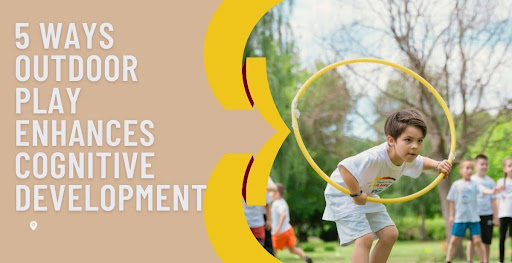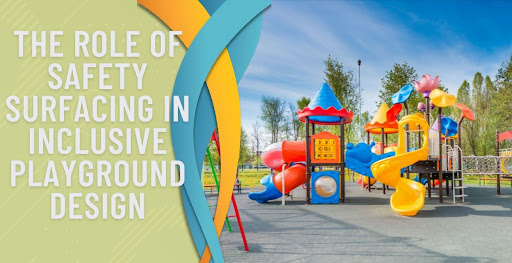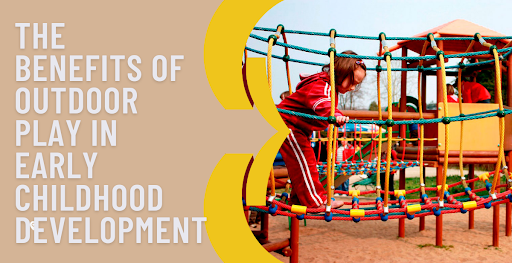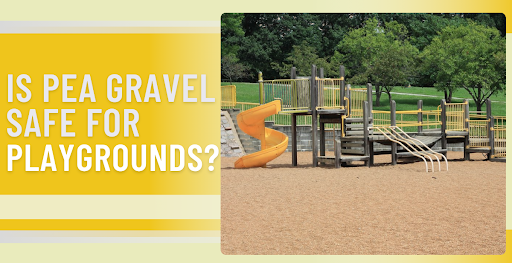How to Choose Age-Appropriate Playground Equipment
How to choose age-appropriate playground equipment that fits kids’ needs, ensures safety, and keeps play both challenging and enjoyable.


Playgrounds are a source of endless entertainment for children. They are spaces that foster social skills, encourage physical activity, and stimulate cognitive development.
However, only some playground equipment is suitable for some age groups. Understanding how to choose age-appropriate playground equipment is vital for the safety and enrichment of children.
Why is Selecting Age-Appropriate Equipment Important?
Choosing age-appropriate playground equipment is not just a matter of safety but also about its developmental benefits. The right equipment:
1. Ensures Safety
Playground equipment that's too advanced can pose a safety risk. Conversely, too simple equipment can cause older kids to misuse it, leading to accidents.
For instance, take 6-year-old Max, who tries to play on a seesaw designed for toddlers. Since the seesaw is built for lighter weights, as Max tries to play with his friend, they exert too much force, causing it to break or malfunction, risking injuries for both children.
This illustrates that it may be unsafe even if older kids can fit on younger equipment.
2. Fosters Development
Age-appropriate equipment caters to the current stage of a child's physical abilities, like gross motor skills and cognitive and social skills. For instance, a 3-year-old, Mia, finds herself in a playground area mostly equipped with simple play panels featuring shapes and basic puzzles for younger toddlers.
While she can easily interact with them, they don't challenge her cognitive skills, which are ready for imaginative play or more advanced problem-solving tasks. As a result, her cognitive and imaginative growth isn't stimulated as effectively as it could be with age-appropriate equipment.
3. Encourages Play
Kids are likelier to use equipment that matches their skill level, encouraging them to stay active and engage with their peers. For instance, two 10-year-olds, Ethan and Sophia, visit a park full of sandboxes and miniature playhouses primarily designed for preschool-aged kids.
The structures don't match their evolved play preferences, which might include team games, challenging swings, or adventure-themed structures. Unable to immerse themselves in play, they may resort to their mobile devices or other passive forms of entertainment.
This situation emphasizes that kids are most engaged when the play equipment resonates with their evolving interests.
4. Promotes Social Skills
Equipment that supports group activities and role-playing games aids in the development of interpersonal skills, teamwork, and understanding of social dynamics. A group of 7-year-olds, eager to play a game of "pretend market," find themselves in a playground without any playhouses or thematic play structures.
The equipment around is either too basic or too advanced, offering no middle ground for group imaginative play. The lack of age-appropriate thematic equipment hinders their ability to engage in role-playing games, a crucial activity for refining social skills and understanding group dynamics at this age.
5. Ensures Age-Specific Physical Challenges
This ensures that children are physically challenged at the right intensity for their age, promoting athletic development and physical resilience. For instance, Jake, an energetic 12-year-old, enters a playground with low-height balance beams for younger kids.
Without age-specific challenges, he misses the opportunity to test and extend his athletic capabilities.
What Are Typical Age Groups For Playground Equipment

Selecting the right playground equipment is pivotal in catering to children's developmental needs and ensuring their safety. Understanding the typical age groups and their corresponding requirements can help create enriching and age-appropriate play environments.
1. Age-Appropriate Play Equipment for Toddlers (6 to 23 Months)
Children are exploring their newfound mobility at this tender age. Crawling, standing, and taking the initial steps are standard, as is a heightened curiosity about the world.
At these younger ages, toddlers develop basic motor skills and hand-eye coordination. Playgrounds intended for this age group should feature the following:
- Bucket seats on swings for added safety
- Low-level free-standing climbing events
- Equipment that promotes crawling, standing, and first steps
Equipment for this age range should include:
- Soft tunnels for crawling
- Small slides with gentle slopes
- Sandbox areas with age-appropriate toys
2. Playgrounds for Preschool Kids (2 to 5 Years Old)
This age range is marked by rapid physical and cognitive development. For preschool-aged kids, play is all about exploration and imagination.
They also start developing social skills learning to play alongside peers. Playgrounds intended for this age group should feature the following:
- Moderate climbing structures
- Imaginative play setups
- Equipment that encourages interactive play
Equipment for this age range should:
- Encourage kids to climb, slide, and run
- Foster social skills through group play areas
- Have simple free-standing climbing events and small slides
3. Equipment for Most Kids From (2 to 12 Years Old)
This broader category encompasses a vast physical and cognitive growth range. Children refine motor skills, engage in complex team games, and navigate more intricate social dynamics.
This broad age range covers both younger kids and school-age kids. Playgrounds for this group should be versatile, featuring:
- More challenging climbing events
- Equipment that fosters both solo and group play
- Areas that cater to different skill levels
Equipment for this age range should:
- Swing sets with both bucket and regular seats
- Medium-sized slides
- Obstacle courses
- Imaginative play setups like pirate ships or castles
4. Age-appropriate playgrounds for Elementary School Kids (5 to 12 Years Old)
Children in this group are becoming more agile, confident, and adventurous. They're mastering gross motor skills and navigating intricate social interactions, including team games and peer relationships.
Playgrounds for this age group should:
- Include advanced free-standing climbing events
- Promote team play and collaboration
- Challenge their physical abilities with higher slides and swings
Equipment for this age range should:
- Large jungle gyms
- Rope bridges
- Tall slides
- Themed setups for group role-playing games
5. Equipment for Older Kids (14 Years Old and Up)
Teens are nearing or have achieved their full physical stature. They crave challenges, competition, and social spaces to hang out with peers.
For older kids, playgrounds are not just about play but also about socializing. Their playgrounds should:
- Foster strength and agility
- Offer spaces for relaxation and socialization
- Challenge them with high-intensity equipment
- Areas designed for relaxation and socialization
Equipment for this age range should:
- Pull-up bars
- Advanced obstacle courses
- High climbing walls
- Shaded areas with seating for relaxation and social interaction
How to Determine if Existing Equipment is Age-Appropriate

When assessing a playground, consider:
Equipment Design
Does it match the developmental abilities of the specific age group? Equipment should be low to the ground for younger children and have fewer moving parts.
Let's say Lisa takes her young kids to a playground. She observes a climbing structure seemingly suitable for children ages 4-10.
However, upon closer inspection, she realizes its design is complex, making it more appropriate for the older spectrum of that age range. The height and spacing of the equipment don't align well with the developmental abilities of her younger kids.
Safety Measures
Look for equipment with safety features relevant to the age range, like toddler bucket seats. For instance, during a weekend family outing, Mark spots a swing set in a section labeled "For Toddlers."
On closer inspection, he's pleased to see the inclusion of bucket seats, ensuring that even if his toddler daughter, Ava, leans forward, she remains safely enclosed in the swing. The playground designers considered the safety measures required for this age group.
Wear and Tear
Even if initially designed for a particular age group, older equipment might no longer be safe if worn out or damaged. Sara often takes her twins, Ethan and Olivia, to a neighborhood playground. Over the years, she's seen the slide fade and noticed some cracks.
On one visit, she sees a jagged edge on the slide's surface, posing a potential risk to children sliding down. While the slide was initially designed for preschool-aged kids, its current state makes it unsafe, indicating the need to update or replace old playground equipment.
Interactive Components
Does the equipment have parts that require coordination and motor skills beyond its intended age group? For instance, Caroline, a daycare teacher, takes her group of 3-year-olds to a new playground.
She finds a play panel full of intricate puzzles and knobs requiring advanced hand-eye coordination. Even though it's placed in the preschool section, Caroline observes her kids struggling with it.
She deduces it's better suited for older, school-age children with more refined motor skills.
Stability and Support
Is the equipment stable enough for its intended age group, and does it offer adequate support? Alex is at the park with his 4-year-old son, Noah.
He sees a set of free-standing climbing events. Noah attempts to climb but struggles as the equipment wobbles under his weight.
Alex realizes that while it might have been intended for younger children, it lacks the stability required for them.
Space and Congestion
Consider if the equipment provides adequate space for the intended age group to play without congestion, ensuring free movement and reducing collision risks.
For instance, Laura, visiting a playground with her 6-year-old daughter Mia, notices that the play area designed for school-age children is cramped. The equipment is placed too closely together, causing children to bump into each other frequently.
Laura understands that while each equipment piece might be age-appropriate, their congested placement could be better.
Height and Depth
Are the platforms' heights and play pits' depths suitable for the target age group? Let's say Jenny brings her toddler to a playground and spots a sandbox.
She finds it too deep on closer examination, making it hard for her little one to step out independently. Though sandboxes are generally great for younger kids, the depth of this one is more apt for older children.
Choose Age-Appropriate Playground Equipment From Park N Play Design
Age-appropriate playground equipment is pivotal in ensuring children's safety and developmental growth. Playground planners and parents must know the best equipment for every age group, from toddlers to older kids.
At Park N Play Design, we prioritize the safety and enrichment of children. Our range of modern playground equipment is curated, considering different age groups' specific needs and abilities.
Choose confidently, knowing that you're investing in a fun, safe, and age-appropriate playground experience for every child. Shop now!


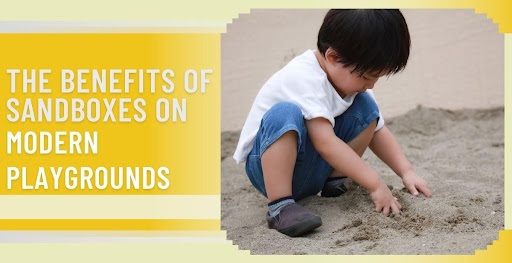
.jpeg)
.jpg)
.jpg)
.jpeg)
